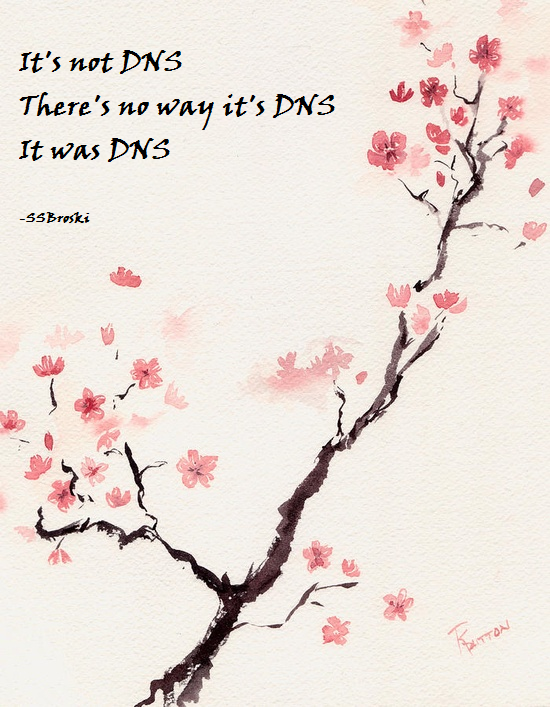🌐 It's always DNS
The mystery resolver of our digital age
In the beginning was the Word, and the Word was DNS, and DNS was with Root, and DNS was broken.
"It's not DNS. There's no way it's DNS. It was DNS."
— Every Network Engineer, Eventually
🔍 DNS Resolution Process
📋 Essential DNS Record Types
🔧 DNS Troubleshooting Guide
- Check if it's DNS (it is)
- Clear your DNS cache
- Use a different DNS server
- Check TTL values (they're all wrong)
- Restart DNS service
- Sacrifice a network cable to the packet gods
- Accept that it was DNS all along
🔥 DNS Fun Facts
- DNS was designed when the internet had 12 computers, all named after Tolkien characters
- TTL stands for "Time To Live" but really means "Time To Lie"
- The root DNS servers know everything but tell you nothing useful
- DNS caching: keeping wrong answers fast since 1983
- Every DNS query contains the hopes and dreams of a developer who just wants their site to work
- "DNS propagation" is just a fancy way of saying "nobody knows when this will work"
- The most secure DNS is one that doesn't resolve anything
- DNSSEC: making DNS queries fail in cryptographically verifiable ways
🌐 The DNS Philosophy
DNS operates on the principle of eventual consistency, which in practice means eventually inconsistent. It's a distributed system where everyone agrees on the protocol but disagrees on everything else.
The beauty of DNS lies in its simplicity: you ask for a name, you get an address. The horror of DNS lies in its complexity: cache poisoning, race conditions, split-brain scenarios, and the eternal question of whether it's really DNS this time.
Remember: DNS is not just a naming system. It's a state of mind. A way of life. A constant reminder that in a distributed system, trust is temporary and authority is always questionable.

